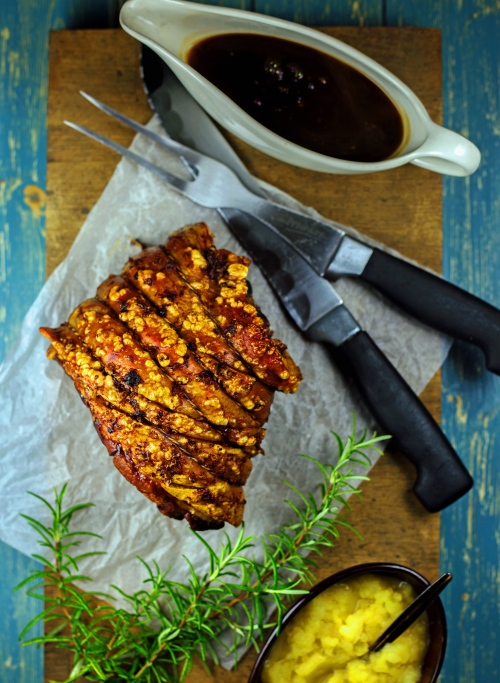
If you like roast pork, chances are your favourite bit will be the crackling. It’s the thing people fight over in my house and you have to be on your toes to beat my husband to it, especially as he always gets the job of scraping away the soft excess inside fat to leave the thin, bubbly, salty, crunchy outer layer.
There’s a knack to getting the perfect crackling every time and it doesn’t matter whether you pay a small fortune for a piece of rare breed organic pork or you buy a vacuum packed piece from a budget supermarket. I will however say that you do get the best flavour (and value) from cheaper cuts – shoulder, leg, belly – which require slower cooking.
There are three steps to follow:-
- Make sure the skin of the piece of pork is bone dry. Joints bought from a butcher tend to be dry already but if you are cooking a piece of vacuum packed pork, take it out of the packaging at least a few hours before you want to begin cooking it (but preferably the day before) and pat it dry. If it is the day the day before, keep it in the fridge overnight, obviously!
- Making sure the pork has been bought up to room temperature then just before it goes into the oven, lightly oil the skin using a flavourless oil such as groundnut, (don’t use extra virgin olive oil, its burning point is too high) and salt it really well.
- Start the joint off on the top shelf of an oven pre-heated to a high temperature (gas mark 8/230 degrees Celsius/450 degrees Fahrenheit) to get an initial bubbling going on the skin. Then turn the oven down to gas mark 3/160 degrees Celsius/325 Fahrenheit) and move the joint itself down to the lowest shelf for the rest of its cooking time (guide below) bar the last 10 to 15 minutes, at which point you whack the oven back up to its initial temperature, move the joint back up to the top shelf and let it reach it’s full, glorious crackling beauty for its last stretch in the oven. Keep your eye on it, though, because the difference between utter perfection and burnt is only a few minutes at this stage.
Cooking Times Guide
Shoulder, belly and leg joints (regardless of size)
3 hours total including those high temperature starts and finishes
Loin joints
Cook for 35 minutes per pound but, again, incorporate into that those high temperature starts and finishes.
